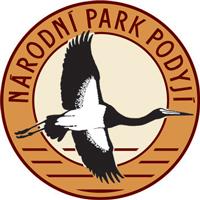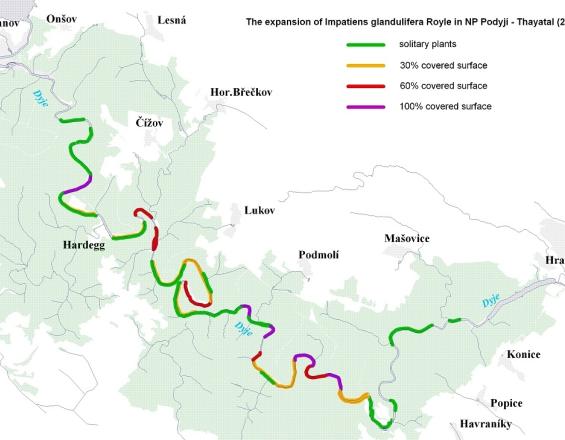
Cooperación transfronteriza para la eliminación de una planta fluvial invasora

La erradicación del neófito bálsamo del Himalaya (Impatiens glandulifera) fue un exitoso proyecto conjunto de dos parques nacionales limítrofes, el de Thayatal (AT) y el de Podyjí (CZ), que condujo a una disminución significativa de las plantas de bálsamo del Himalaya en el valle del río y al retorno de las plantas autóctonas. Los factores de éxito más importantes fueron el enfoque común de la gestión del valle del río, el acceso a ambas orillas del río por parte del personal checo, el cambio en la gestión de las praderas del valle del río y el seguimiento conjunto continuo en el valle del río.
Contexto
Défis à relever
Ubicación
Procesar
Resumen del proceso
Bloques de construcción
Control de plantas invasoras
Factores facilitadores
Lección aprendida
Comunicación del personal de áreas protegidas transfronterizas
Factores facilitadores
Lección aprendida
Eliminación transfronteriza conjunta de una planta invasora
Factores facilitadores
Lección aprendida
Coordinación de la gestión de los prados con los propietarios locales
Factores facilitadores
Lección aprendida
Impactos
El proyecto conjunto de vigilancia y erradicación de especies invasoras de los dos parques ha sido un gran éxito. El bálsamo del Himalaya ha desaparecido de ambos parques nacionales, con la excepción de algunas poblaciones aisladas. De ese modo se evitaron repercusiones problemáticas en el ecosistema del río Thaya debidas a la rápida propagación del neófito. La eliminación selectiva del bálsamo del Himalaya comenzó en 1995 en la parte checa y en 2001 en la austriaca tras la creación del Parque Nacional de Thayatal en 2000. La población de bálsamo del Himalaya disminuyó entonces rápidamente. El sorprendente efecto positivo se vio potenciado por las grandes inundaciones de 2002, que también impidieron la propagación masiva del bálsamo del Himalaya. Desde entonces, la planta prácticamente ha desaparecido del valle del río. Todos los años se lleva a cabo la vigilancia conjunta y la eliminación del bálsamo del Himalaya y otros neófitos invasores en el valle del río, junto con la siega de las praderas fluviales por parte de los propietarios locales. Estas medidas anuales siguen siendo necesarias para controlar el bálsamo del Himalaya en el valle La experiencia de una cooperación fructífera mediante esfuerzos conjuntos de erradicación y vigilancia de especies invasoras aportó un valor añadido que anima y facilita la futura colaboración transfronteriza.







